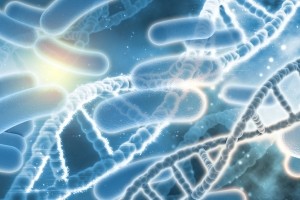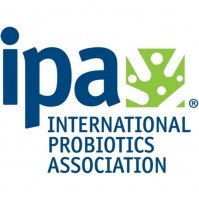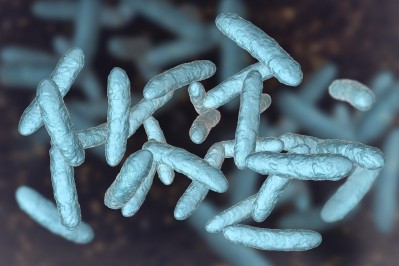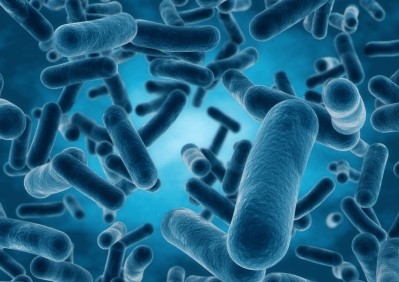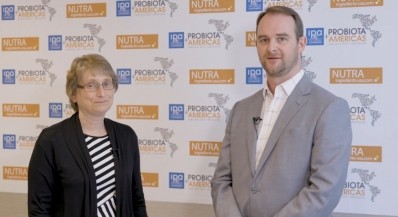20 things we learned at the 2018 IPA DC Workshop

The market
1. Probiotics are the fastest growing supplements globally, worth $5.1 billion in 2017. The market is predicted to grow to $7 billion between 2017 and 2022, which is 40% growth, according to data from Euromonitor International presented by George Paraskevakos, executive director of the International Probiotics Association (IPA). Generation X and baby boomers are the two leading consumer groups.
2. Yogurt is the dominant form globally for probiotic consumption, making up 73% of the $42.5 billion global retail value in 2017. Dietary supplements represent only 12%. Yogurt dominates in North America with 67%, but supplements represent 32%, according to Euromonitor data.
The Nagoya Protocol
3. This is not something that has been discussed very much at many dietary supplement conferences, but the Nagoya Protocol – a supplementary agreement to the Convention on Biological Diversity – has big implications for the use of bio resources. While the USA has not ratified either the protocol or the convention, American companies still need to adhere if they source materials in other countries, explained Dr Markus Wyss, strain director, global regulatory affairs for DSM.
4. Adherence is complicated by the vague language in the protocol, added Dr Wyss. It is not clear, for example, if prior informed consent (PIC) or mutually agreed terms (MAT) are required before or after screening campaigns (when 100s of plant extracts, microorganisms, or individual enzymes are assessed to find the needles in the haystacks).
Specifically for probiotics, it is not only the strain that needs to be considered, but there may also be obligations to the formulation ingredients.
Taxonomic changes to the genus Lactobacillus
5. Big changes are coming to how many of the most popular probiotics are classified. The Lactobacillus genus is extremely diverse and includes more than 230 species. This includes commercially important strains such as casei, paracasei, plantarum, salivarius, reuteri, and rhamnosus, but genetics have shown that these can no longer be considered Lactobacillus, explained Dr Elisa Salvetti, a senior post-doctoral fellow at the department of biotechnology at the University of Verona in Italy. “The status quo is not an option,” she said. “Lactobacillus reclassification is inevitable.” The genus Lactobacillus may be split into as many as 12 new genera.
6. The practical implications of this are that the experts will now have to come up with new genus classifications. Species names will not change, said Dr Salvetti, but the genus will. For example, L. casei will still be L. casei, but the “L.” will no longer stand for Lactobacillus.
What’s clear is that a substantial communication challenge looms as stakeholders seek to minimize the inevitable confusion regarding the ‘old commercial’ and ‘correct scientific’ nomenclature.
Dr Jessica Terhaar (née Younes), IPA’s director of scientific affairs, said the organization views this is an important scientific issue. IPA will issue a one-page summary for members, and liaise with other stakeholders to apprise them of these changes and the implications.
Global regulatory changes and challenges
7. Big changes are coming to Brazil, which published its new regulations specifically for probiotics in July 2018. ANVISA (Brazil’s regulatory agency) assessed a range of foreign regulatory systems, and looked at what was successful elsewhere, explained Solange Henoud, regulatory affairs director for Lallemand and chair of IPA’s regulatory affairs committee. The new regulations do not include an automatic approval system (in other words, approval elsewhere does not lead to automatic approval in Brazil), she added.
There is much that IPA agrees with, and much it does not in the new regulations. A meeting in December will discuss the guidance and safe list.
8. Canada is often held up as the best regulatory framework for probiotics, where the monograph system has led to over 50 species with a general health claim. “We want to know what strain is and we want to know you can characterize it,” said Michael Steller, supervisor in the probiotic unit of Health Canada’s Natural & Non-prescription Health Products Directorate (NNHPD).
Steller asked some questions of the industry, including whether we are at a stage where we can enumerate specific strains within complex probiotic mixes. Health Canada also states that minimum dose is 10 million CFUs, but is this minimum too low? He also noted that the agency expects a minimum of 80% of label claim to be present at end of shelf life, but asked if overages pose a risk.
On the topic of taxonomic changes, he noted: “Products requiring naming updates need to be afforded some balanced consideration regarding marketplace recognition and best naming practices.”
9. Bob Durkin, deputy director of the FDA’s Office of Dietary Supplement Programs, told attendees that the New Dietary Ingredient (NDI) Notification process is very important to the agency. “Looking back, we’ve noticed an increase in sophistication in notifications for probiotics, and many have been successful,” he said. “People who engage with us for a pre-notification meeting, and work with us during the process have a 'staggeringly' higher rate of success,” he added.
Durkin also acknowledged the leadership role played by IPA, noting how the organization shares the agency’s three key pillars of consumer safety, product integrity, and informed decision making.
Analytical advances
10. The FDA is actively assessing probiotic products in the marketplace and compiling a database of the microorganisms present, explained Carmen Tartera, PhD, research microbiologist, in the FDA’s division of molecular biology office of applied research and safety assessment. To date, the FDA has gone through 76 products, identifying 1,947 isolates and 46 species in dietary supplements and cultured foods.
11. The FDA makes its sequences available to the public. “Our goal is to upload metagenomic data to the public,” she added. “Industry should also upload and share, but there are challenges here.” Dr Tartera also said that many of the sequences in NCBI are not good enough. “We have to make an effort to upload sequences that are of high quality.”
12. The Agency is also exploring how lactobacillus and bifidobacteria bacteriophages could be used to improve detection of contaminants and low level constituents.
13. Dr Scott Jackson, leader of the complex microbial systems group at NIST, noted that a high quality genome analysis requires a hybrid of approaches because, “you want sequence quality and read length. No single technology does both.
“We’re proposing that a high quality “finished” genome sequence must be provided for each strain. This only needs to be done once, and currently costs $2,000-4,000 per strain,” he said.
14. Dr Mary Ellen Sanders, executive director of ISAPP and chair of the USP Probiotics Expert Panel, gave an update on probiotic monographs at USP. “Consumers want to be assured of product quality – and that’s what this panel is all about,” she explained.
Discussions have already taken place that led to agreement that:
- It is possible to use DNA methods to identify different strains in multi-strain products
- If you have multiple strains that are highly related, you might have to develop unique ID tests that are different from those used to identify strains pre-blend
- We do not have validated methods to quantify a multi-strain product at the strain level, but digital droplet PCR has potential in the future.
Dr Sanders added that the application of whole genome sequencing technologies for release testing and quality control is possible.
15. A note of caution was sounded around pinning everything on labeling probiotics with CFUs (colony forming units). “We do need a measure of potency and that is not milligrams,” she explained. “But in the future this may be AFUs (active fluorescent units) or a technology we cannot predict at this time.”
Dr Sanders also pointed out that the relationship between CFU and AFU differs throughout the age of a product.
The panel is also working on a technical review that will be submitted for publication in Frontiers in Microbiology later this year, added Dr Sanders.
16. Dr Kit Goldman, director of dietary supplements and herbal medicine at USP, added that USP is working on a General Chapter <64> for probiotics addressing the definition, identity, strength (enumeration CFUs), contaminants, additional requirements (storage and labeling)
FSMA
17. The Food Safety Modernization Act (FSMA) does apply to dietary supplements, explained Larisa Pavlick, VP of regulatory and compliance at the United Natural Products Alliance (UNPA). Under FSMA, the old 21 CFR Part 110 is being replaced by 21 CFR 117 (and dietary supplement manufacturers still have to be compliant with 21 CFR 111). “You need a PCQI [Preventive Controls Qualified Individual] on staff,” said Pavlick. IPA is working with the United Natural Products Alliance to develop a case study/ model specific to probiotics.
IPA committee updates
18. Efforts to establish harmonized probiotic standards at CODEX, which are being driven by Argentina, will take a long time, said Dr Amy Smith, global lead for regulatory affairs at DuPont Nutrition & Health and chair IPA’s Codex Task Force. IPA has been working with Argentina, but the association does not want to do this in isolation, she said. “We want input. We want it to be science-based and a globally recognized effort.”
Argentina took responsibility for putting together a discussion paper to take this forward, which it did in June, and IPA submitted comments specific to issues in the Argentina discussion paper. The next meeting will take place in November.
19. Dr Terhaar noted that, in response to a “negative press onslaught”, IPA is exploring the creation of a “more proactive group with IPA scientific and education committees” to respond to such media.
“We are not proud enough of the good science that we have as an industry and we don’t do enough to communicate it,” she said.
20. Regarding its manufacturing guidelines, Kevin Mehring, CEO of UAS Labs and chair of the manufacturing committee, said that these should be published in early 2019. Third party auditing is a part of the guidelines, and will be another resource to help with compliance. “An MOU is being concluded to recommend a third party auditor to lead the initiative,” he said. However, the guidelines do not replace dietary supplement cGMPs, stressed Mehring.
Why are such guidelines necessary? Because new contract manufacturing organizations (CMOs) – or CMOs that are new to probiotics – have come quickly to this attractive segment, and competition has intensified in multiple markets, especially the US & China, and not all of these are up to the required standards.

